Rolling Robots: Update September 23, 2025
This week we look at three examples showing different roles of embodied robotics: inspection/compliance (Irvine), broad innovation and scale (China), and customer-facing mobility services (Zoox).
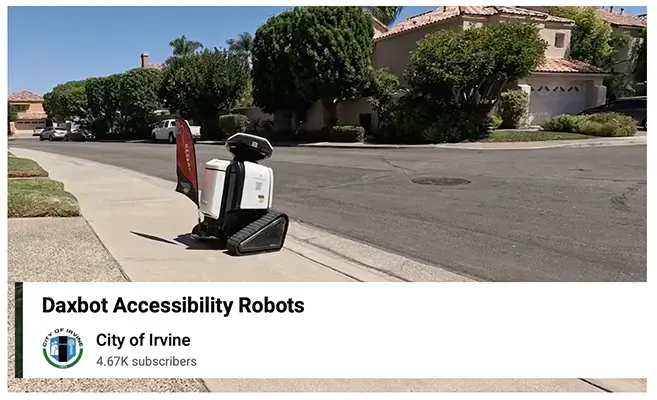
Irvine Deploys Daxbot Robots to Map Sidewalk Accessibility — City of Irvine, Aug. 11, 2025
The City of Irvine has launched a new initiative to improve accessibility by deploying Daxbot service robots across its 950 miles of sidewalks, 9,000 curb ramps, 70 miles of trails, and other public facilities. Equipped with GPS, inclinometers, laser rangefinders, and stereo cameras, these robots collect detailed data on cracks, slope, and obstructions that may hinder accessibility for people with disabilities. The robots not only provide precise measurements but also simulate real-world challenges faced by wheelchair users, allowing Irvine to prioritize repairs and upgrades more effectively.
The initiative, supported by Bureau Veritas and City Public Works, runs from August through early 2026, with robots surveying designated areas weekly and staff presenting findings to the City Council at the conclusion. Beyond function, the robots are designed for community engagement, programmed to smile, tilt their heads, and interact in a friendly way. Irvine emphasizes this project as a best-practices model, merging human ingenuity with AI-driven robotics to create safer and more inclusive infrastructure.
Relevance for Business
For SMB executives and managers, Irvine’s deployment illustrates how AI-powered robotics can be used to enhance infrastructure, reduce manual inspection costs, and support compliance with accessibility and safety regulations. This model demonstrates how automation can improve service delivery in areas such as facilities management, logistics, and public safety, while also showing the importance of community acceptance and trust-building when introducing new technologies.
Calls to Action
🔹 Explore potential uses of AI-enabled robotics in your industry for inspection, maintenance, or customer service tasks.
🔹 Assess how automation could help meet compliance standards (e.g., ADA, safety, environmental).
🔹 Consider community-facing strategies that make technology adoption more approachable and trusted.
🔹 Monitor Irvine’s outcomes as a case study for scaling robotics across city and enterprise operations.
Summary Created by ReadAboutAI.com
https://www.youtube.com/watch?v=gBP55hag0Xc&t=10s: AI Robotics https://cityofirvine.org/news-media/news-article/robots-help-map-accessibility-irvine?utm_source=chatgpt.com: AI Robotics
Zoox Launches Steering Wheel-Free Shuttles in Las Vegas — Bloomberg Technology, Sept. 10, 2025
Zoox has officially opened its fully driverless, steering wheel-free shuttle service to the public in Las Vegas, marking a milestone in the U.S. autonomous vehicle market. Using a dedicated app, passengers can request rides between five major destinations (Resorts World, New York-New York, Area 15, Luxor, and Topgolf) from 11 a.m. to 1 a.m. daily, with service provided free of charge during the pilot phase. Unlike rivals who retrofit consumer vehicles, Zoox designed its shuttles from the ground up, with four inward-facing seats and no driver controls, creating a ride experience closer to an airport shuttle than a car【transcript】.
CEO Aicha Evans emphasized that Zoox’s slower rollout compared to competitors was intentional, prioritizing safety, regulatory compliance, and scalability. The company aims to expand routes in Las Vegas and then San Francisco, pending regulatory approval, before introducing paid fares. Evans highlighted that Zoox has spent over a decadedeveloping this model, focusing on long-term sustainability, serviceability, and a consistent passenger experience. Early demand has been strong, and Zoox views this as the start of a major shift in urban mobility.
Relevance for Business
For SMB executives and managers, Zoox’s launch demonstrates how purpose-built autonomous vehicles could reshape urban transportation, tourism, and logistics. It showcases the importance of deliberate innovation—prioritizing regulation, safety, and user trust over rushing to market. The pilot also highlights the business model evolution of AV services: starting free to build adoption, then layering on monetization once public acceptance and regulatory clearance are secured.
Calls to Action
🔹 Monitor autonomous shuttle pilots as potential disruptors to rideshare, shuttle, and logistics services.
🔹 Explore partnerships with AV providers for customer transport in high-traffic areas (e.g., events, entertainment venues).
🔹 Consider how safety-first innovation and regulatory alignment can build trust and adoption in emerging tech rollouts.
🔹 Assess the customer experience dimension—Zoox’s “magical, shuttle-like” design is a lesson in differentiation.
🔹 Track expansion into San Francisco and beyond to evaluate timing for potential business integration or competition.
Summary Created by ReadAboutAI.com
https://www.youtube.com/watch?v=9D3Y-3adHko: AI Robotics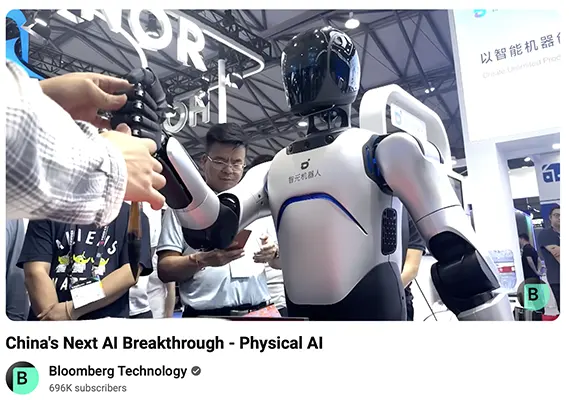
China’s Embodied AI Surge — Bloomberg Technology, June 26, 2025
China is rapidly scaling embodied AI—the fusion of robotics with artificial intelligence—positioning itself as the global leader in humanoid robotics and physical AI. According to China’s Ministry of Industry and Information Technology, the country produced nearly 100 embodied AI products in the past year and now commands 70% of the global market for such technologies. This dominance is powered by China’s integrated supply chain for sensors, chips, and robotic components, alongside a massive $138 billion state-backed venture fund for humanoid robots【source: Bloomberg Technology】.
From industrial automation and EVs to humanoid agents and consumer robots, embodied AI is expanding into both personal and enterprise use. Companies like Unitary are releasing humanoid avatars priced at $16,000, while others, like Lenovo, are deploying inspection robots such as the six-legged Daystar. Job postings in China’s humanoid robotics sector have quadrupled in a year, with rising wages for algorithm engineers fueling innovation. Analysts suggest this wave of DeepSeek-like breakthroughs could unleash over 100 new advances in the next 18 months, marking a transformative period for robotics and global competition.
Relevance for Business
For SMB executives and managers, China’s embodied AI boom signals a paradigm shift in automation and robotics adoption. These developments will influence supply chains, pricing models, and global competition, potentially reshaping costs and expectations in industries ranging from manufacturing and logistics to customer-facing services. The rapid growth in embodied AI highlights not only the technical capabilities but also the geopolitical and economic implications, as Western firms may need to accelerate innovation and partnerships to remain competitive.
Calls to Action
🔹 Track Chinese embodied AI players (e.g., Unitary, Lenovo) as potential disruptors or partners in robotics-enabled industries.
🔹 Evaluate how embodied AI could streamline operations in areas like inspection, diagnostics, logistics, and customer engagement.
🔹 Prepare for market competition by monitoring pricing trends, as China’s scale may drive costs of humanoid robots downward.
🔹 Explore opportunities to upskill teams in robotics, algorithms, and AI integration as demand for embodied AI expertise rises globally.
🔹 Consider pilot programs with embodied AI in specific tasks to future-proof operations before adoption scales industry-wide.
Summary Created by ReadAboutAI.com
https://www.youtube.com/watch?v=GCepN2IG97w: AI Robotics
Closing: Robots update September 23, 2025
Key Takeaways for SMBs & Managers
- These three examples show different roles of embodied robotics: inspection/compliance (Irvine), broad innovation and scale (China), and customer-facing mobility services (Zoox).
- Although motivations differ (regulation vs. competition vs. mobility), all benefit from good sensor + AI integration, robust public trust / regulatory alignment, and clear use of data to make decisions.
- Timing matters: Pilots (Zoox), localized deployments (Irvine), and national industrial strategy (China) signal where investments might pay off first.
Summary Created by ReadAboutAI.com
Update: September 9, 2025
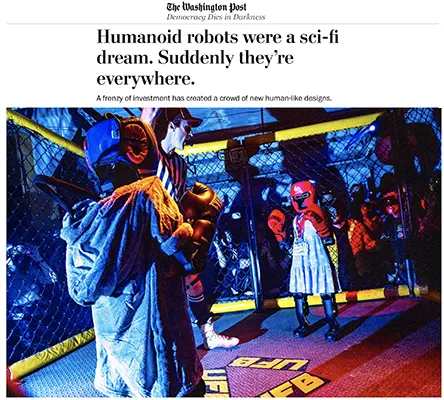
Executive Summary: Humanoid Robots Enter Workplaces and Homes
Humanoid robots, once considered a sci-fi fantasy, are rapidly becoming a commercial reality as investment surges past $5 billion since 2024. Companies like Agility Robotics, Tesla, and start-ups such as Foundation and 1X are deploying bipedal robots into warehouses, auto plants, and even private homes. Agility is building facilities to manufacture up to 10,000 robots annually, while Amazon, Meta, and Google have all entered partnerships or invested in the field. Nvidia CEO Jensen Huang has compared humanoids’ potential to the launch of ChatGPT, suggesting a “ChatGPT moment” for robotics is imminent.
Despite technical advances in AI, balancing systems, and batteries, challenges remain. Robots still struggle with dexterity, gripping, and safety in real-world settings. Many current deployments involve teleoperation or hybrid human-robot control. Nevertheless, projections suggest up to 78 million humanoid robots could be working in the U.S. by 2050.
Industrial Applications
Warehouses and auto factories are proving grounds for humanoid robots. Agility’s robots are already used in logistics facilities for Spanx and Schaeffler, complementing existing fleets of wheeled robots. Boston Dynamics, Foundation, and other robotics firms are also testing deployments. While proponents see these machines as answers to labor shortages and safety issues, critics warn of reliability, dexterity, and ethical concerns around job displacement and premature adoption.
Consumer and Social Use Cases
Beyond industrial roles, companies such as 1X are testing humanoids in homes, exploring companionship and eldercare. Robots like “Neo” can serve drinks, water plants, and perform basic chores, though most complex tasks require remote human control. Public perception oscillates between fascination and fear—humanoids may be embraced for their relatability, yet overtrust in their abilities can pose risks.
Future Outlook
Industry leaders are betting big on humanoid robotics as a transformational technology. With billions in capital, global competition (especially from China), and advancing AI, humanoids could become mainstream within decades. Still, skepticism persists: critics argue that wheels often outperform legs in industrial settings, and safety frameworks must evolve to prevent harm. For now, humanoid robots stand as both a symbol of ambition and a test case for how society integrates advanced automation.
Relevance for Business
For SMB executives and managers, humanoid robotics signals both disruption and opportunity. Logistics, manufacturing, and service industries could benefit from labor augmentation, but the transition carries risks of workforce displacement, safety liability, and premature hype adoption. Early movers may gain efficiency and competitive edge, while those unprepared may face higher operational costs or cultural resistance.
Calls to Action
- Evaluate pilot programs: Consider limited trials in logistics or manufacturing workflows.
- Plan for workforce transition: Anticipate job redesign, reskilling, and ethical communication with employees.
- Monitor safety standards: Stay updated on ASTM and other regulatory guidelines for humanoid deployment.
- Assess ROI carefully: Compare humanoids against wheeled or fixed automation before investing.
- Track global competition: Follow developments in China, the U.S., and Europe to gauge adoption speed and costs.
Wrap Up
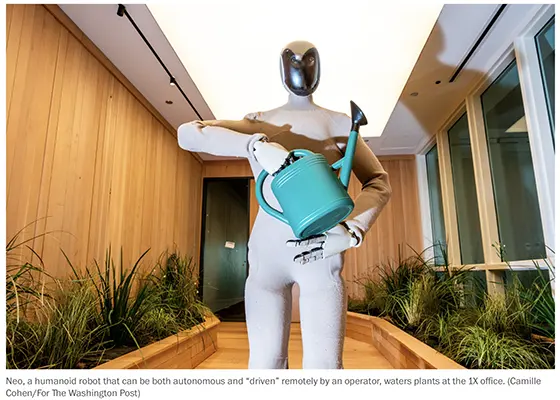
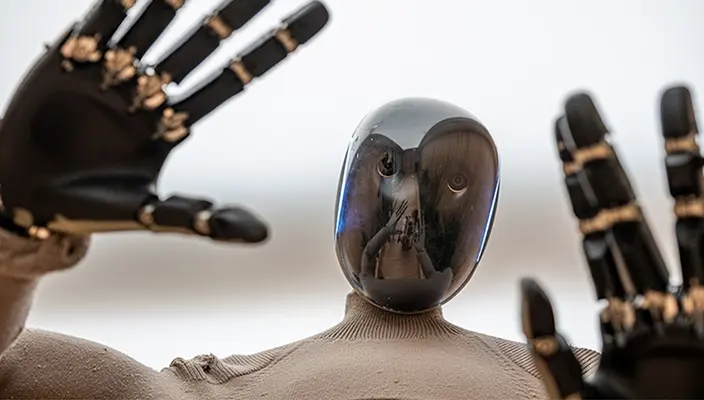
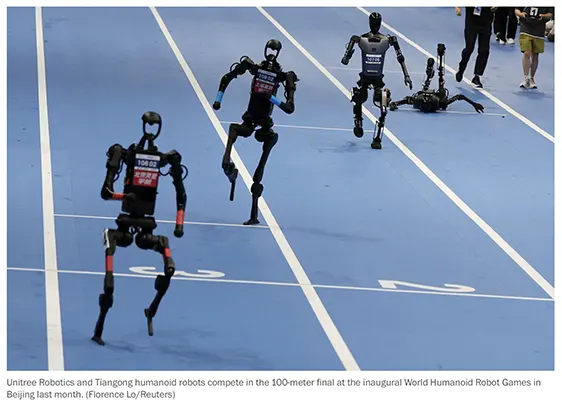
Humanoid robots are moving from science fiction into warehouses, auto plants, and even homes, as billions in venture capital and Big Tech investment fuel rapid development. Companies like Agility Robotics, Tesla, and 1X are testing machines that can walk, lift, and perform basic chores, with Nvidia calling this the “ChatGPT moment” for robotics. While forecasts suggest tens of millions of humanoids may be deployed by 2050, challenges remain in dexterity, safety, and cost-effectiveness compared to wheeled automation. For businesses, humanoid robots represent both an opportunity to augment labor and a risk if adopted prematurely without proper safeguards.
Update: August 19, 2025
Introduction – The State of Robotics in 2025
Robotics has moved from factory floors into the global spotlight, with humanoids sprinting, kickboxing, and even playing football at China’s first World Humanoid Robot Games. The showcase highlighted both remarkable progress—from agile locomotion to AI-driven coordination—and lingering challenges such as balance, dexterity, and adaptability. As China accelerates state-backed investment and Western companies like Amazon, Boston Dynamics, FANUC, and KUKA refine innovation, the robotics sector is at an inflection point: shifting from industrial automation to broader applications in logistics, healthcare, service, and everyday life.
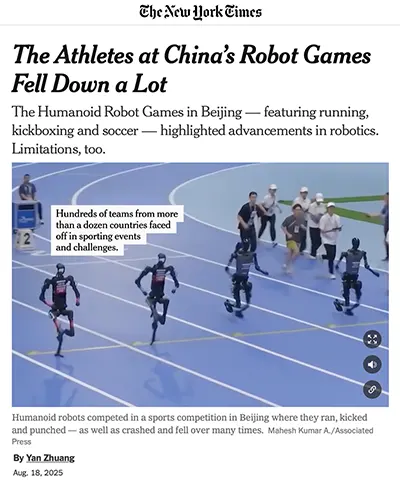
The World Humanoid Robot Games in Beijing
Showcased both the promise and the pitfalls of humanoid robotics on a global stage. With 280 teams from 16 countries, the event featured track races, football, kickboxing, and applied challenges like sorting medicines and handling materials. Robots dazzled audiences with backflips, sprints, and goal-scoring, yet also stumbled frequently—collapsing mid-sprint, toppling over during football matches, and even losing their heads (literally) in competition. These contrasts underscored how far humanoid robotics has come in mobility, agility, and AI-driven coordination, while also revealing the remaining gaps in dexterity, balance, and higher-level reasoning.
For China, the Games were not just spectacle but a strategic showcase of “embodied AI”. Supported by state investment—including 1 trillion yuan pledged to AI and robotics—Beijing positioned the event as proof of rapid progress and international leadership ambitions. Chinese firms like Unitree Robotics dominated medals, while universities like Tsinghua defeated international competitors in robotics football. At the same time, the Games highlighted global collaboration: German, Dutch, and Portuguese teams tested new humanoid designs, emphasizing the scientific value of shared datasets and open code, even when performance lagged.
The business implications are significant. Observers note parallels with China’s electric vehicle surge—what looks like hype today may transform into global market dominance tomorrow. For now, humanoid robots remain clumsy outside controlled settings, but the Games produced valuable data and testbeds for future commercialization. China’s low-cost supply chains already produce robots at a fraction of U.S. or European costs, and national policy ties humanoid robotics to solving real challenges, from aging populations to industrial automation.



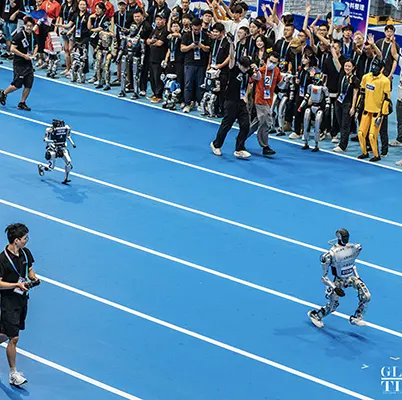
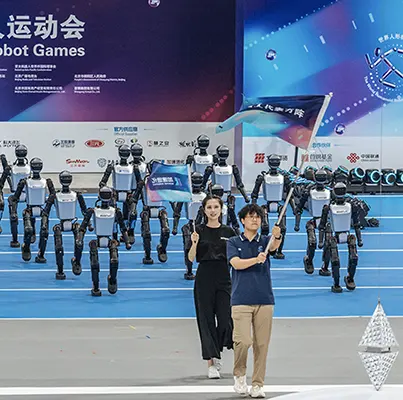
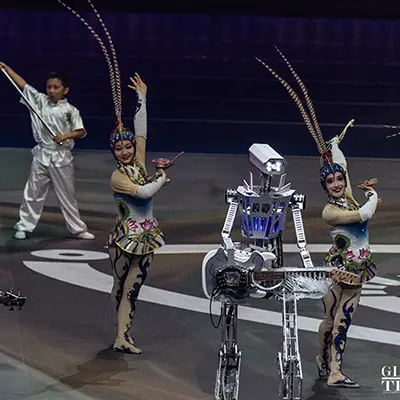

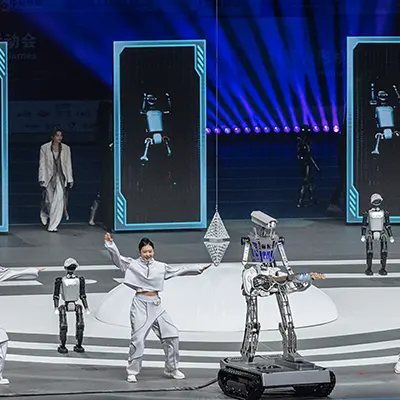

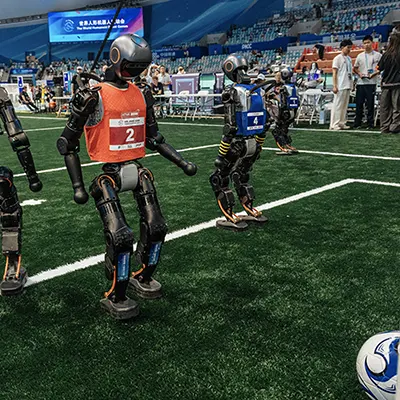
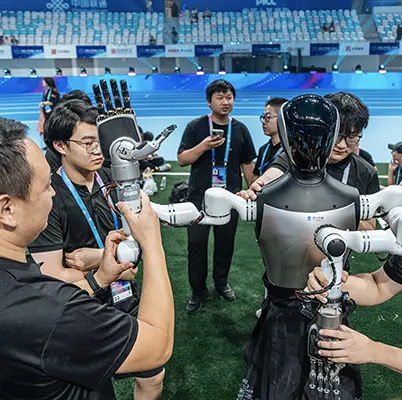
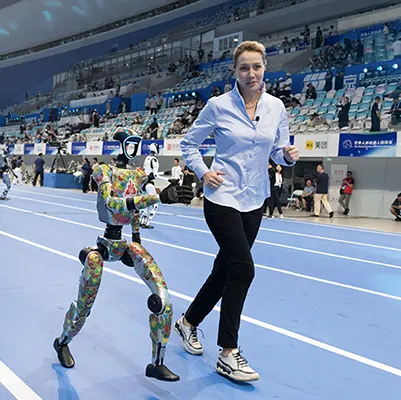
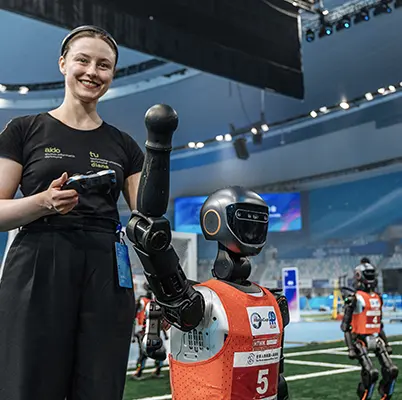
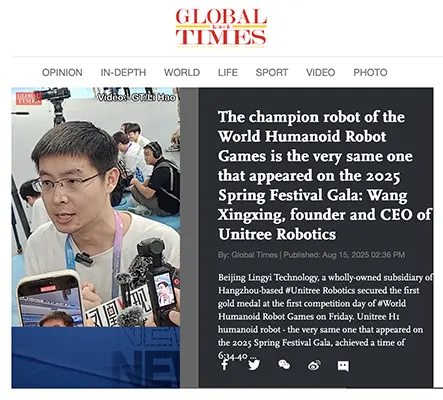
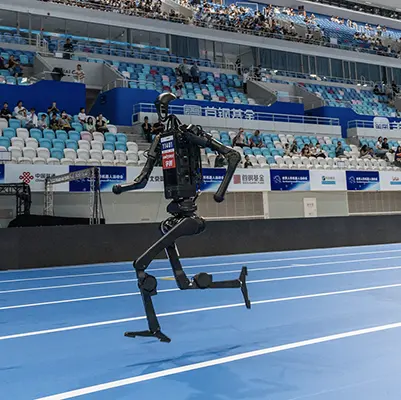
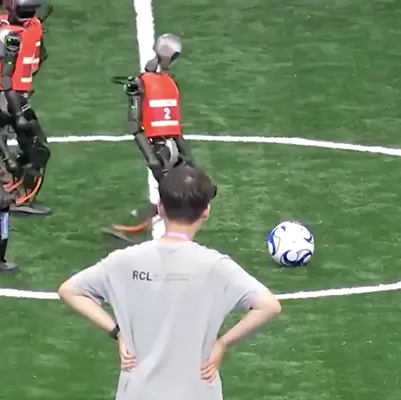

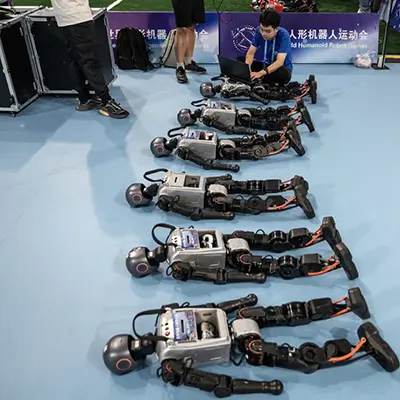
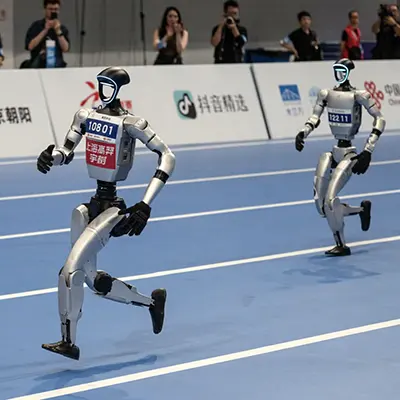
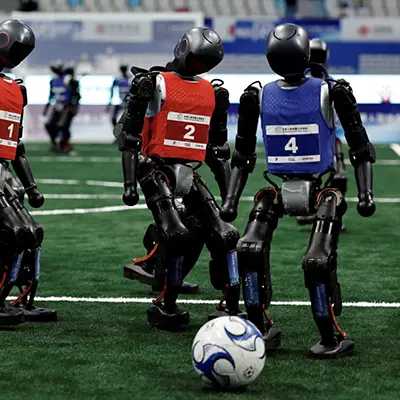
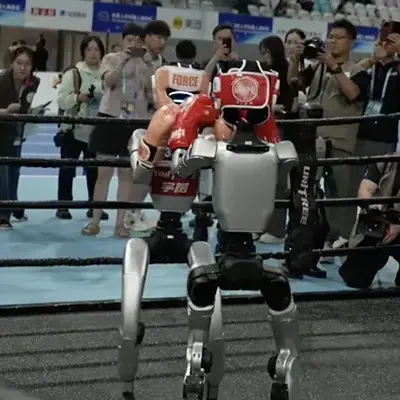
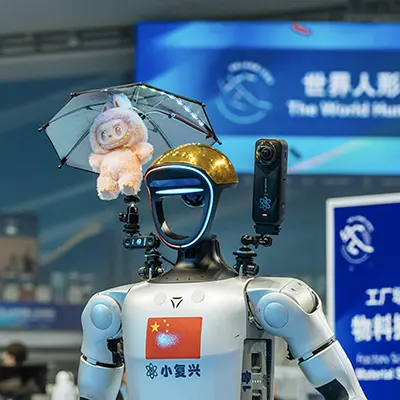
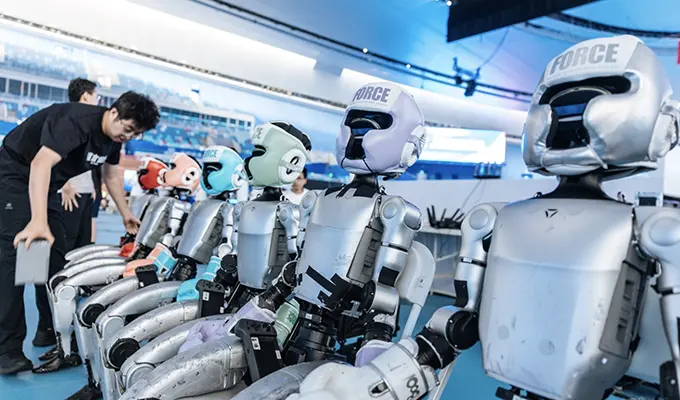
Relevance for Business
- Proof of Concept, Not Market Readiness: The Games show humanoids are improving fast in locomotion and AI coordination, but still struggle with daily tasks. Businesses should see this as a preview of near-future capabilities, not immediate deployment.
- Strategic Edge for China: Like EVs, robotics is being positioned as a global export industry. Expect cost-competitive humanoids and service robots from China in the next 3–5 years.
- Collaboration and Ecosystems: International participation highlights how robotics ecosystems are forming. Data sharing, joint research, and cross-border competitions could accelerate progress faster than isolated R&D.
- Signals for SMBs: While industrial robotics is already mainstream, humanoid robotics will soon extend automation to logistics, elder care, hospitality, and retail—areas SMBs need to watch closely.
Calls to Action
- Monitor emerging robotics suppliers—especially Chinese firms (Unitree, UBTech, Fourier Intelligence) that may soon offer cost-effective solutions.
- Assess automation roadmaps in your sector: logistics, customer service, and healthcare may see humanoid pilots first.
- Benchmark against competitors using robotics: Amazon, for instance, is already deploying humanoid Digitrobots for warehouse tasks.
- Prepare workforce strategies now—consider retraining, human-robot collaboration policies, and safety protocols.
- Explore partnerships with universities or robotics labs to stay ahead of applied use cases and early adoption opportunities.
: AI Robotics https://www.reuters.com/sports/robots-race-play-football-crash-collapse-chinas-robot-olympics-2025-08-15/
: AI Robotics https://www.theguardian.com/world/2025/aug/15/china-world-humanoid-robot-games-advances-limitations
: AI Robotics https://www.globaltimes.cn/page/202508/1341057.shtml#
: AI Robotics https://www.globaltimes.cn/galleries/5874.html?id=11
: AI Robotics https://www.bbc.com/news/videos/cvg3mv3rz60o
: AI Robotics https://x.com/unitreerobotics/status/1955928317355549137?s=46: AI Robotics
Robotics in 2025 is at a turning point—China pushes scale with state-backed humanoids while U.S., Japan, and Germany drive innovation, together reshaping automation beyond the factory floor.
🤖 Robotics Highlights: July 21, 2025
1. AI-Trained Robot Completes Gallbladder Surgery on a Pig
A surgical robot developed by Johns Hopkins University has successfully removed a pig’s gallbladder using a two-tier AI system—first transforming 17 hours of surgical footage into plain-language instructions, then translating those instructions into 3D tool movements. The robot achieved a 100% success rate across seven trials and is now preparing for live animal testing. This milestone marks a notable step toward autonomous robotic surgery, though human oversight remains essential (news.stanford.edu, nypost.com).
2. The Year of Humanoid Robot Factory Workers
Humanoid robots are moving from labs to commercial deployments in manufacturing and service settings. Boston Dynamics (now under Hyundai) plans to introduce its electric Atlas robots on factory floors, alongside other humanoids from Agility and Figure. Powered by advances in AI—such as Google DeepMind’s Gemini Robotics—these robots are becoming flexible, generalist workers. Goldman Sachs projects a $38 billion market by 2035, highlighting the urgency for businesses to adapt to this emerging workforce (wired.com).
These stories underscore how robotics is evolving on two critical fronts: medical precision and industrial automation. Whether it’s surgeons or shop floors, intelligent machines are getting ready to take center stage.
Julia McCoy Robotics update: June 19, 2025
BREAKING: Figure’s Helix AI Gives Robots Human-Level Reasoning in 500 Hours
Figure’s Helix AI Robot Revolution
Key Breakthrough
Figure Robotics has achieved a paradigm shift in artificial intelligence with their Helix AI model, creating the world’s first unified vision-language-action system that gives robots human-level reasoning capabilities. This breakthrough was accomplished in an unprecedented 500 hours of training time, representing a dramatic acceleration in AI development timelines.
Technology Innovation
The Helix AI system operates on a dual-intelligence framework:
- System 1: Ultra-fast 200 Hz reactive responses for immediate actions
- System 2: Strategic thinking and complex reasoning capabilities
- Collaborative Intelligence: Multiple robots can work together without pre-programming
This represents the emergence of Artificial General Intelligence (AGI) in physical robotic form, not just theoretical AI.
Market Impact & Financials
- $1.5 billion funding round valuing Figure at $40 billion
- Production target: 100,000 units by 2027
- Initial price point: $30,000-$50,000 (expected to decrease rapidly)
- Adoption timeline faster than smartphones or internet penetration
Relevance for Small-Medium Business (SMB) Executives
Immediate Opportunities
- Manufacturing & Operations: AI-powered robots can work alongside human managers, dramatically increasing productivity while reducing labor costs and safety risks
- Customer Service: Advanced reasoning capabilities enable robots to handle complex customer interactions with genuine understanding
- Logistics & Warehousing: Robots can adapt to changing environments and requirements without constant reprogramming
Strategic Considerations
- Timeline Acceleration: Household and business robots are projected for 2025-2026, not decades away
- Competitive Advantage: Early adopters will gain significant operational efficiencies
- Cost-Benefit Analysis: Initial investment may be offset by reduced labor costs and increased productivity within 2-3 years
Industry Transformation
- Healthcare: Robots with genuine patient care capabilities
- Retail: Intelligent inventory management and customer assistance
- Professional Services: AI assistants that can perform complex reasoning tasks
Strategic Recommendations & Call to Action
For SMB Leadership:
- Assess Current Operations: Identify repetitive, dangerous, or labor-intensive processes suitable for robotic automation
- Budget Planning: Begin allocating capital for robot integration over the next 18-24 months
- Workforce Development: Start training employees to work alongside AI systems rather than viewing them as replacements
- Competitive Analysis: Monitor how competitors and industry leaders are adopting robotic solutions
Immediate Action Items:
- Education: Invest in AI and robotics education for leadership teams
- Pilot Programs: Identify low-risk, high-impact areas for potential robot deployment
- Technology Partnerships: Establish relationships with robotics companies and AI solution providers
- Financial Planning: Prepare for the capital investment required for robotic integration
The Urgency Factor
The exponential learning rate of these systems means the technology gap between early adopters and laggards will widen rapidly. SMBs that wait for “perfect” solutions may find themselves at a permanent competitive disadvantage.
Bottom Line
Figure’s Helix AI represents more than a technological breakthrough—it’s the beginning of a fundamental shift in how businesses operate. SMB executives must move from asking “if” they’ll integrate robotic intelligence to “when” and “how.” The companies that act strategically now will define the competitive landscape of tomorrow.
The robot revolution isn’t coming—it’s here. The question for every business leader is: Will you lead this transformation or be disrupted by it?
https://www.youtube.com/watch?v=m3RLHZxehGA: AI RoboticsRelevant Summaries about AI & Robotics
🚀 Executive Summary: “AI Is About to Get Physical – Embodied AI Advances” Morgan Stanley: June 6, 2025
1. Overview
This video explores key developments in embodied AI—where artificial intelligence is integrated into physical platforms such as robots and autonomous vehicles—showcasing how machines are evolving beyond software.
2. Key Themes & Trends
- Physical autonomy & hardware integration: AI control systems are now embedded into hardware like robotics arms, drones, delivery bots, and autonomous vehicles.
- Cross-industry impact: From manufacturing and warehousing to field services and delivery, embodied AI is touching multiple sectors.
- Advances in perception and interaction: Next-gen sensors (e.g., lidar, cameras) combined with AI allow machines to interpret, navigate, and manipulate physical environments more accurately.
- Human-robot collaboration: The video highlights collaborative robots (“cobots”) that can work safely side-by-side with humans, boosting productivity without requiring full automation.
3. SMB-Relevant Opportunities
- Operational efficiency: SMBs in industries like logistics, asset management, or facility services can leverage bots to reduce labor costs and errors.
- Enhanced customer service: Hospitality or retail SMBs may deploy delivery bots or interactive kiosks to differentiate their offerings.
- Strategic scaling: Adopting embodied AI in a modular or pilot approach allows SMBs to scale automation gradually and test ROI before full implementation.
4. Considerations for Decision-Makers
- Initial investment vs. long-term gains: Though upfront costs (hardware, integration, training) exist, they often yield ROI through labor savings, error reduction, and new service capabilities.
- Skills and training needs: Implementing robotic systems requires partnerships or upskilling, which is manageable through targeted training or vendor support.
- Regulatory and safety compliance: Any deployment must meet standards like OSHA, privacy, and data/security regulations, especially in customer-facing environments.
- Pilot projects & scalability: Starting small lets SMBs assess feasibility, gather data, and refine processes before scaling.
5. Strategic Takeaway for SMB Executives
Embodied AI is ready for real-world adoption—with improving price-performance ratios, more flexible platforms, and applications across diverse verticals. For SMBs, strategic pilots in areas like warehouse management or frontline services can unlock productivity gains and marketplace differentiation. Successful implementations are rooted in clear use-cases, measurable performance metrics, and vendor partnerships with deployment and support expertise.
View: https://www.youtube.com/watch?v=3WZNxNr7kS8
Summary by ReadAboutAI.com
Six current articles, podcasts, and reports ideal for SMB executives seeking a strong foundation in the convergence of physical robotics and AI:
1. Article – “Reflecting On 2024’s ‘Year Of Embodied AI’: Hype And Reality” (Forbes)
An executive reflection by Jeff Mahler, CTO of Ambi Robotics, examining major pilots, breakthroughs, and real-world deployment of embodied AI in 2024—and what lies ahead in 2025 (embodied-ai.org, forbes.com).
2. Article – “Embodied AI: The race to build robots that think, move – and earn” (Portfolio Adviser, April 2025)
Covers global investments (e.g., Tesla Optimus, Boston Dynamics’ Atlas, Apptronik’s Apollo), cost reductions due to advanced sensors/actuators, and labor shortages fueling adoption (portfolio-adviser.com).
3. News – “AI Robots Are Entering the Public World—With Mixed Results” (WSJ, Dec 2024)
Highlights the shift from industrial use to customer-facing environments—museums, retail, restaurants—fueled by generative AI, while also detailing challenges with dexterity and human interaction (wsj.com).
4. Podcast – “Automate 2025 recap — How robotics and AI are powering smart manufacturing” (PlantServices.com, May 2025)
Industry experts from the Automate 2025 show discuss real-world use cases: simulation-driven design, predictive maintenance, and automation solutions increasingly accessible to smaller manufacturers (plantservices.com).
5. Audio Report – “Researchers are now putting AI into robots to do physical tasks” (NPR All Things Considered, Mar 2025)
A grounding look at university/deep tech labs (e.g., Stanford, Physical Intelligence) teaching robots generalizable tasks—folding laundry, sorting—demonstrating a leap in autonomous capability (npr.org).
6. Report – “2024 in review: The year robotics and AI changed what we thought was possible” (Brain Corp, Dec 2024)
An industry-focused retrospective on autonomous mobile robots driving tangible efficiency in inventory, navigation, and warehouse processes, including deployments at NASA (braincorp.com).
Summary by ReadAboutAI.com
↑ Back to Top